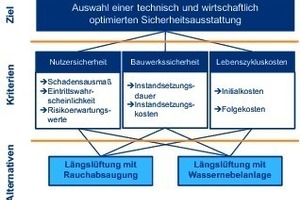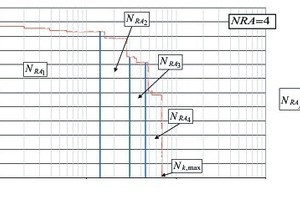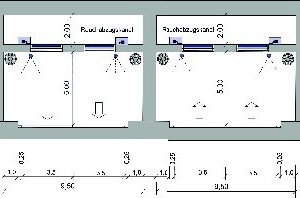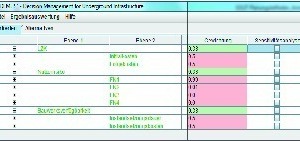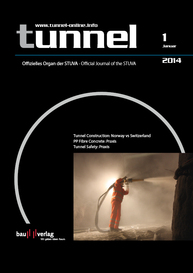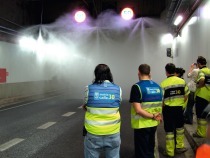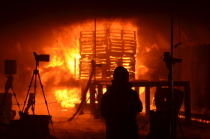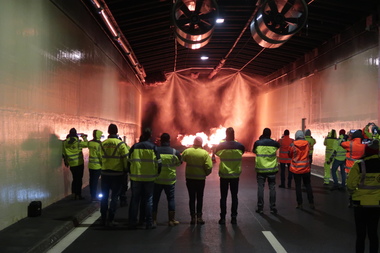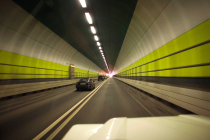Decision Model for Furnishing Tunnels with safety technical SystemsPart 2: Assessing 2 Furnishing Variants with the Aid of an integrated decision Model
In the first part it was shown how the evaluation and selection of safety technical systems under certain circumstances confront clients and planners with a complicated problem [1]. Aspects such as the safety of tunnel users and the structure itself, life cycle costs for the structure and the relevant furnishing as well as the location and availability in the network make the choice of the correct furnishing variants a complex decision. In Part 2 the authors introduce a multi-criterial decision model, which was developed during the “Safety of Life in Tunnels – 2” (SOLIT²) project1 sponsored by the Federal Economics Ministry (BMWi).
It enables decisions to be taken in a controlled and transparent manner taking the cited general conditions and criteria into account. Taking the example of a concrete model tunnel it is displayed how the technical and economic efficiency of competing furnishing variants can be comparatively assessed in a transparent and equitable manner. The developments presented here are to be found for example in the “Guideline for the holistic Appraisal of Tunnels with Fire Fighting Systems as well as their Planning”, which can be downloaded from the homepage of the SOLIT Consortium under solit.info.
Decision Model in the course of SOLIT2
General
Within the framework of the SOLIT2 project among other things the alternative configuration possibilities through the application of a water mist fire fighting system (FFFS/WN-BBA) with regard to the safety technical furnishing of a road tunnel were examined. The aim was to enable different furnishing variants to be compared with respect to the protective aims presented in Part 1 of this publication. Towards this end, various decision models were appraised and examined with respect to their capacity for adaptation within the described context. Many...

